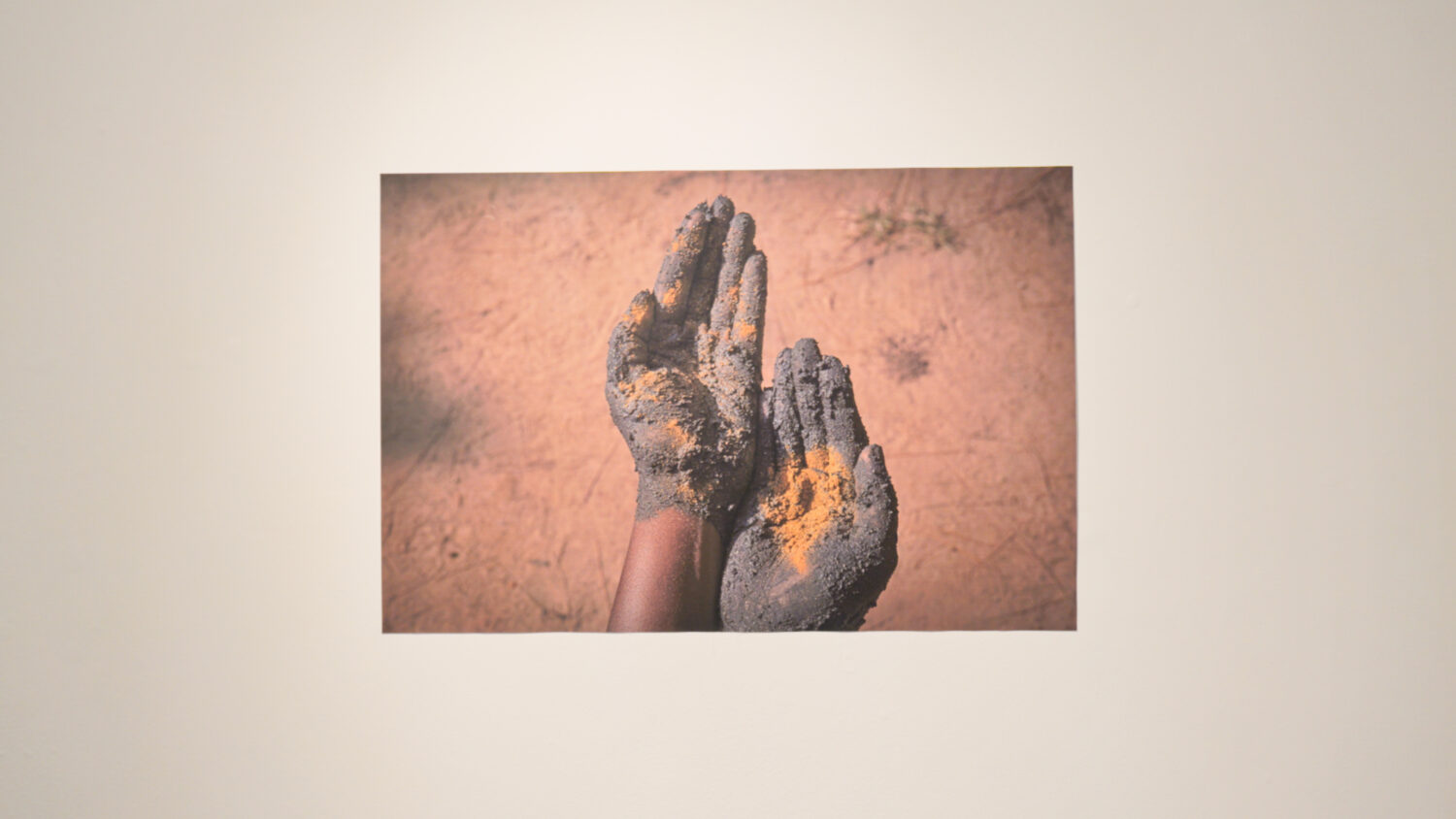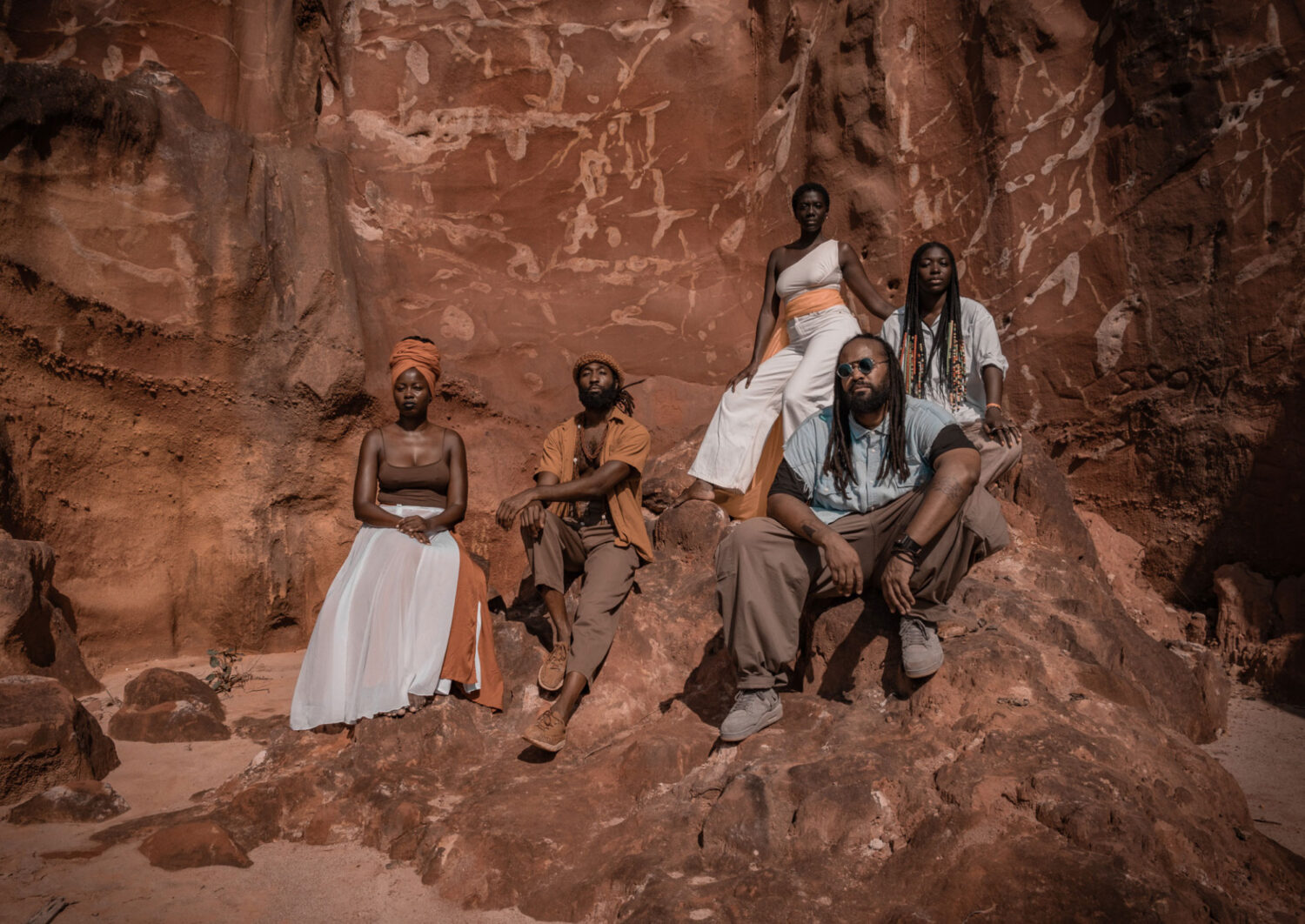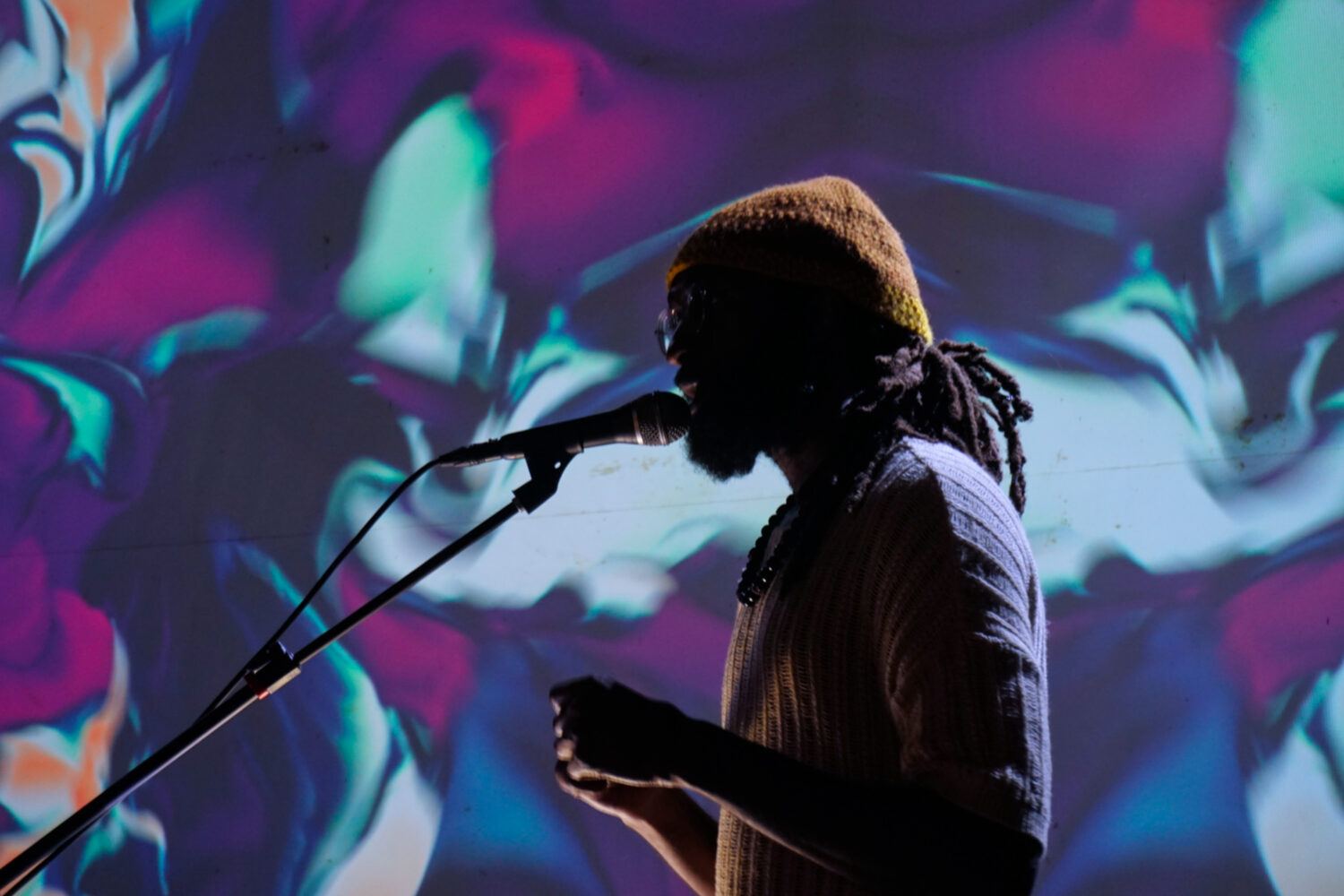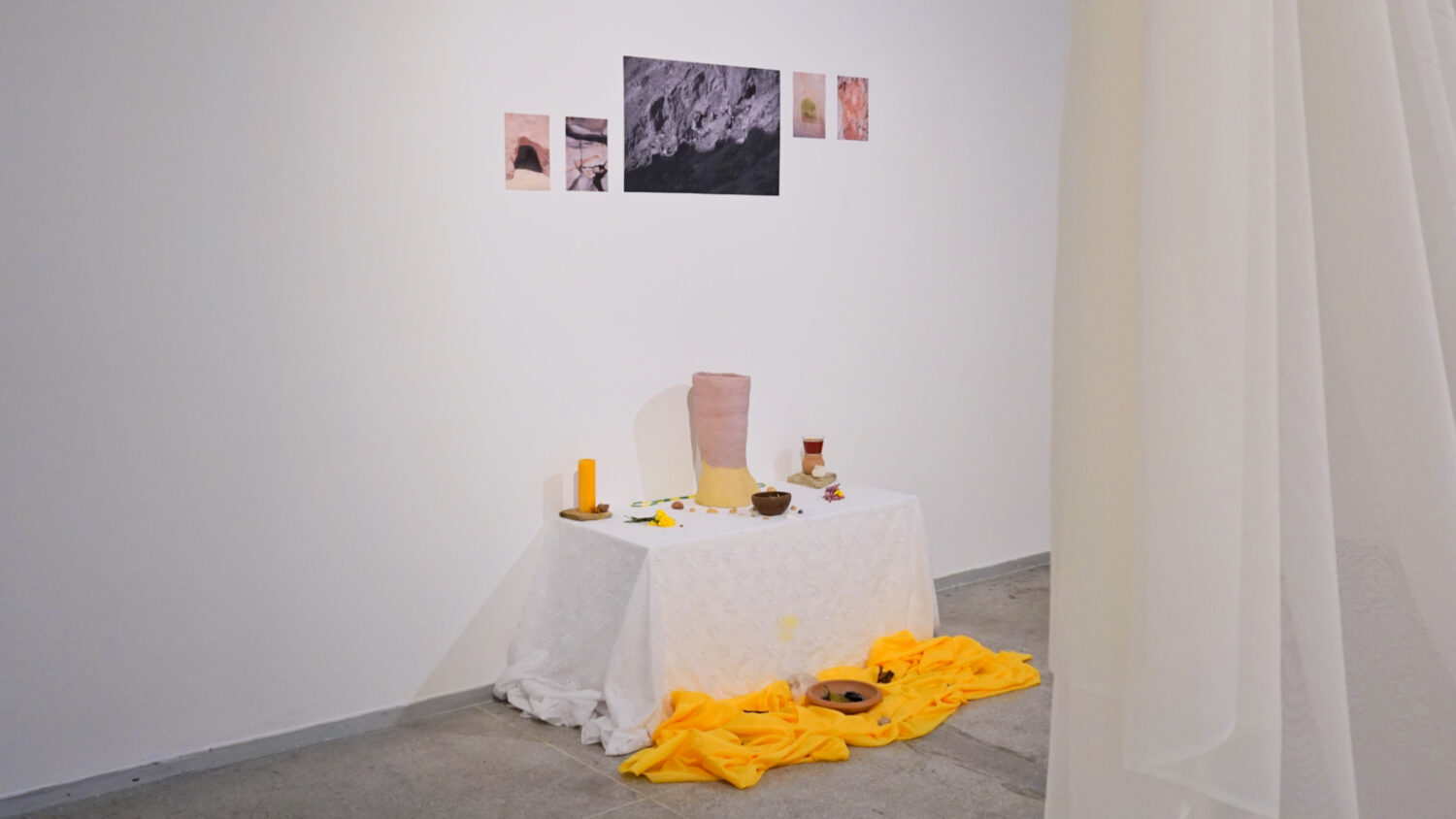Floating Geographies: Discover the Artist-Led Initiative Reenvisioning Afro-Diasporic Space
By Wendie ZahiboThe masonn project, a transmedia and transnational artistic initiative, brings together diverse perspectives on vernacular architecture, mystical realism, and Afro-diasporic memory.
How do populations, shaped by colonisation and displacement, use architecture and space-making as forms of survival and creativity? How do these communities, both distinct and connected, resist oppression through the transformation of their environments into living, breathing archives of memory?

These spaces are not static; they are regenerative, dynamic, and deeply embodied in cultural rituals, gestures, and acts of resistance. Conceived by myself, Wendie Zahibo, and through collaboration with fellow artists Keren Lasme, Anaïs Cheleux, Jeebrahil, and RD/WL, masonn draws on the intersections of art, sound, installation, and performance to explore how communities shaped by the transatlantic slave trade have, across four territories—Guadeloupe, Brazil, Ivory Coast, and the United States—reimagined their living spaces as archives of memory.
Our month-long residency at Arapuca Cultura e Arte, in Tambaba, Brazil, served as an important chapter in this ongoing project. Hosted by artist Serge Huot, this residency offered us the opportunity to engage with indigenous and Afro-descendant heritage, blending the living history of the land with our personal diasporic experiences. The culmination of this research and co-creation was our exhibition at Instituto Energisa in João Pessoa, where we sought to materialise our reflections on vernacular architecture, cultural continuity, and collective memory through an immersive, multimedia installation.
Creating from a “Floating Dyaspora”
At the core of masonn is the concept of the “floating dyaspora,” inspired by Edwidge Danticat’s reflections on diasporic movement. In the face of forced migration and chaos, how do communities build “home”? What does it mean to “make architecture” in societies where bodies have been historically constrained, yet continuously resist through creative, ritualistic, and communal practices? In masonn, creating space is not merely architectural—it is cultural and spiritual. It represents an “anchored itinerancy,” where memories are not fixed to structures but are embedded in bodies, gestures, and rhythms of life. Through visual art, sound, and performance, masonn explores these regenerative archives, highlighting how communities transform their environments into sites of memory, survival, and resilience.
The Residency at Arapuca and Instituto Energisa Exhibition
The Arapuca Cultura e Arte residency provided an ideal environment for us to delve deeper into these questions. The natural beauty of Tambaba, with its dense forests and proximity to the Atlantic Ocean, acted as a living metaphor for the themes we explored. Like the waves that shape the coastline, the history of the Afro-diaspora has been one of constant movement, adaptation, and reinvention. During our month of research, we found ourselves not only reflecting on our individual creative processes but also coming together in moments of shared discovery, each of us contributing to the collective tapestry of the project.
The final exhibition at Instituto Energisa was designed as a sensory journey through these layers of memory and experience. As a multidisciplinary showcase, it included photography, video, sound, installation and performance, each element building on the other to create a plural narrative.

Keren Lasme’s contribution to the exhibition was a tribute to the indigenous peoples of Brazil, and more broadly, to the land itself—“our mother.” Her work invoked a sense of ancestral connection, offering a symbolic portal that honors those who came before and the ongoing resonance of their presence.
Anaïs Cheleux contributed a photographic work and performance where she approached the body as a monument, a space constructed through the pain of loss and the search for memory. Her body became a site of commemoration and resilience, where the gestures and rituals of remembrance were transformed into living elements of cultural survival.
RD/WL and Jeebrahil collaborated on the sound component of the exhibition, working with the concept that “the sea is history,” as expressed by Derek Walcott. They created a soundscape that merged the rhythms of the Black Atlantic, blending Batucada, Gwo Ka, Samba, Bèlè, Zouk, and Foli into a continuous flow. Their work echoed Édouard Glissant’s idea that “each path is a resonance of another,” embracing the notion of shared echoes across the walls and façades of masonn’s transnational architecture.

My own contributions featured an installation which emphasised the memory of gesture, where bodily rituals express the collective memory of Black Atlantic communities. Through a process of collage, I created unexpected connections between disparate worlds, weaving together diverse cultural elements to present a renewed perspective on Afro-diasporic heritage.
The exhibition also included a collaborative ceramic installation, created with Serge Huot. This collective work brought together the six artists in a shared exploration of how material and form can encapsulate both ancestral memory and contemporary reimagination.
Looking Forward
The residency in Brazil marks a significant milestone for masonn. The next phase will take place in Dakar, during the off of the Biennale in Gorée, followed by a co-creation residency in Ivory Coast. Each new chapter builds upon the last, through evolving collaborations, masonn continues to explore how memory and identity are shaped by both place and movement, expanding the dialogue on Afro-diasporic architecture and resilience.
A Utopian Space of Memory and Connection
At the heart of masonn is the desire to create an imaginative, utopian space for diasporic communities. This space serves as a site for memory, connection, and regeneration. Rather than a nostalgic retreat into the past, it represents a forward-looking engagement with Afro-descendant heritage, offering new perspectives on identity and survival. The living archive proposed by masonn is constantly evolving, inviting unexpected connections and conversations to emerge.

The forced migrations of today—Sudan, Congo, Palestine, Lebanon, to name just a few—remind us that the struggle for belonging and space is as relevant now as it has ever been. masonn seeks to create a utopian space where our displaced communities can reclaim memory, resist erasure, and reimagine our place in the world, defying the necropolitical forces that threaten our existence.
References:
1. Danticat, Edwidge. Create Dangerously: The Immigrant Artist at Work. Princeton University Press, 2010.
2. hooks, bell. Belonging: A Culture of Place. Routledge, 2008.
3. Blou, Lena. Le Corps en Mouvement: Une Perspective Caribéenne. Mémoire d’outre-mer, 2011.
4. Glissant, Édouard. Poetics of Relation. University of Michigan Press, 1997.
5. Gilroy, Paul. The Black Atlantic: Modernity and Double Consciousness. Harvard University Press, 1993.
Feature image: masonn at Instituto Energisa, Joao Pessoa, Brazil. Photo: Pedro Anisio